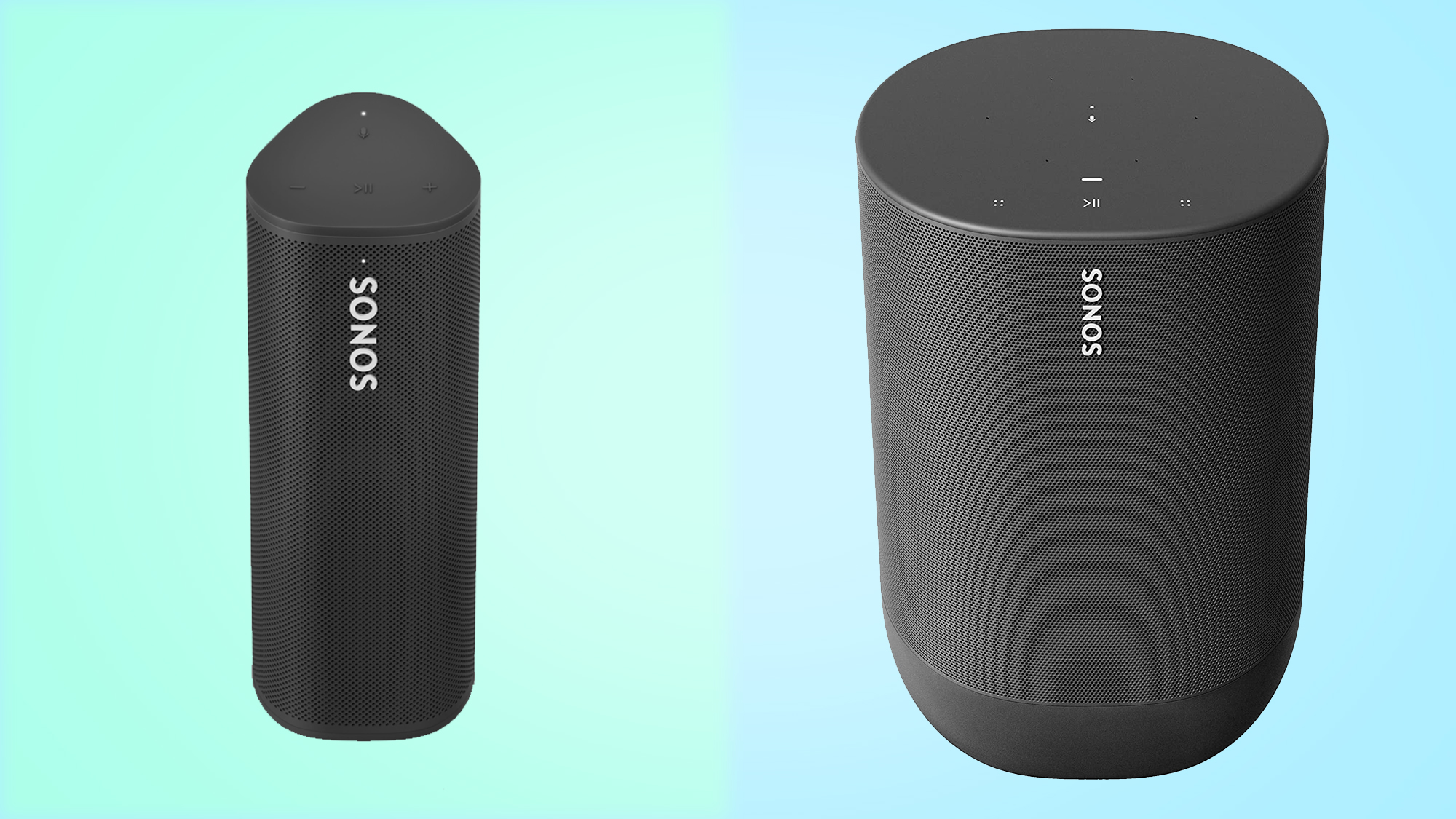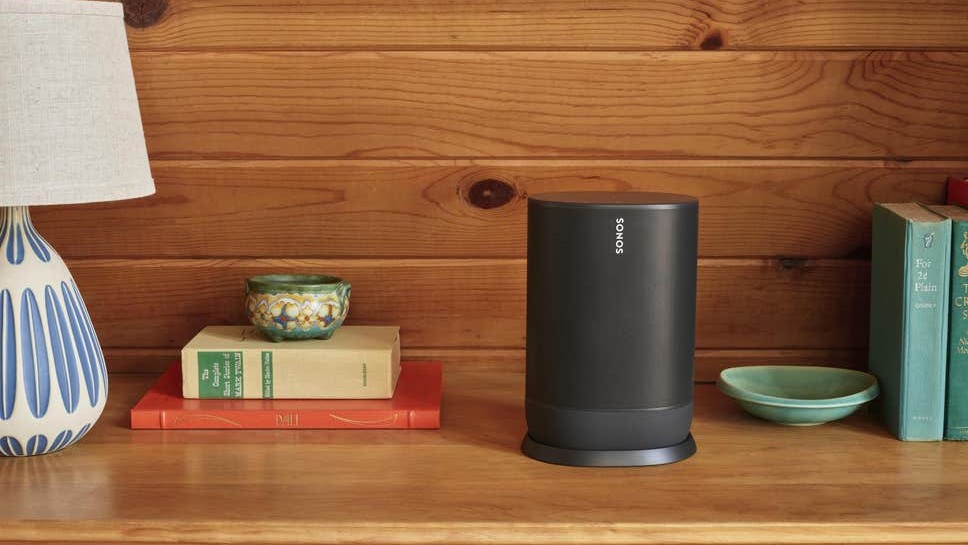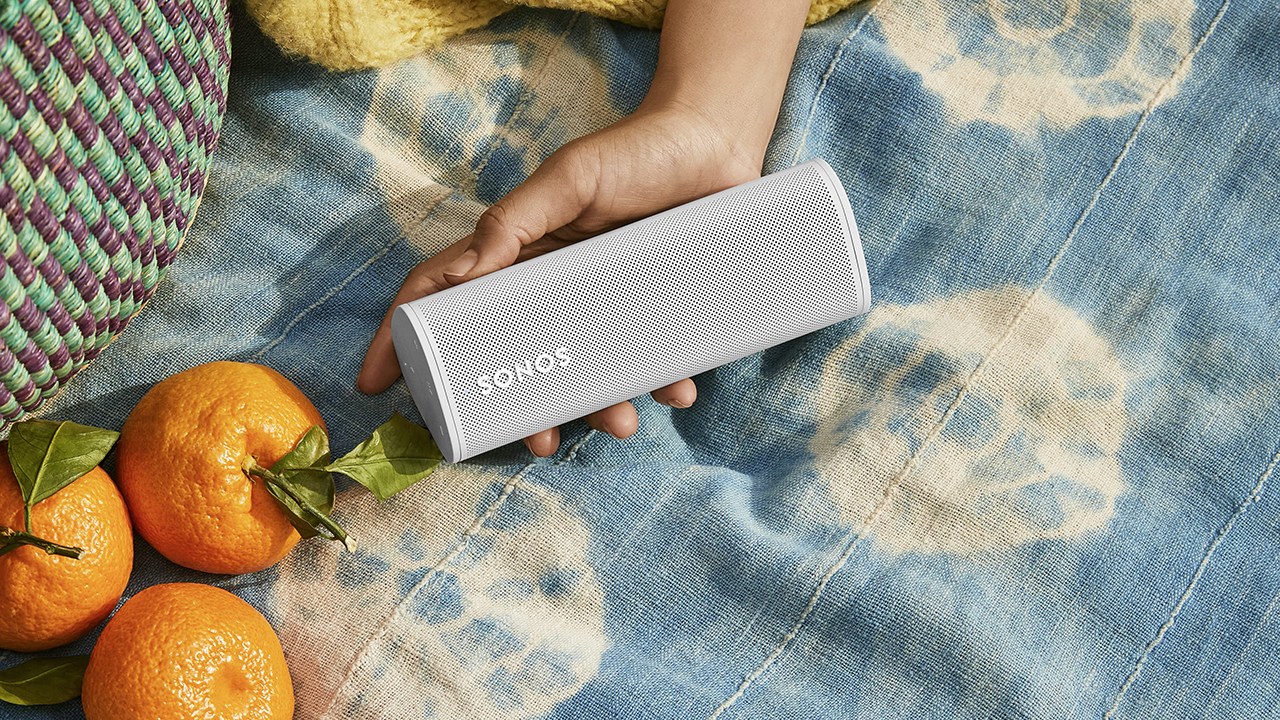Sonos Roam vs Sonos Move: what's new with the latest Sonos speaker?
Here’s how the Sonos Roam and the Sonos Move compare

The Sonos Roam is the latest wireless speaker from the multi-room audio company, building on the success of the portable Sonos Move and adding some key features to make its newest device even better for listening to music on the go.
Unveiled on March 9, the Sonos Roam is available to preorder now, and will officially go on sale on April 20 – nearly two years after the Sonos Move came onto the scene.
There are lots of similarities between the two speakers: both offer Bluetooth and Wi-Fi connectivity, both can be used outside, and both come with Google Assistant and Alexa onboard. However, a combination of new Sonos Roam-specific features and a more rugged design means the latest speaker could take the crown from the Sonos Move as the best Bluetooth speaker of 2021, if it lives up to its promises.
Unfortunately, the Sonos Roam stopped working halfway through our tests, which is why we haven’t given it a star rating in our review. Until we can confirm that our test unit had an isolated problem, we can't recommend the Sonos Roam. We'll be updating this piece once we've received more information on what caused the fault in our device.
However, from what we've seen so far, we're mightily impressed by the new Sonos speaker, and if the issues we experienced do turn out to be a one-off, we'll have no problem recommending it as the best portable speaker you can buy today, even more so than the Sonos Move.
For now, here’s how the two portable smart speakers compare based on their specs and our tests.
- Read our Sonos Roam review
Sonos Roam vs Sonos Move: price and availability
The Sonos Roam will be available to buy on April 20, though it’s available to preorder now from the Sonos website for $169 / £159 / AU$279.
Get daily insight, inspiration and deals in your inbox
Sign up for breaking news, reviews, opinion, top tech deals, and more.
That makes it the cheapest Sonos speaker to date – though that’s by no means a low price for a portable speaker.
The Sonos Move was launched in September 2019, and is far more expensive at $399 / £399 / AU$649. Again, that’s pricey for a portable speaker – but this isn’t your average Bluetooth boombox, making it difficult to place alongside any direct competition. Few portable speakers, even those with smart assistants built in, have as rich a feature set as the Sonos Move, so that higher price tag is more easily justified.
The Sonos Roam is also incredibly feature-rich, and if the issues we experienced are resolved, we think its price will be justified, too.
Sonos Roam vs Sonos Move: design
The Sonos Roam is much smaller than the Sonos Move, with a longer, thinner build than its comparatively squat predecessor.
It’s far lighter too, coming in at 0.95lbs / 0.43kg compared to the Move’s 6.6lbs / 2.9kg frame, making it easier to carry around or throw in your bag.
On the left end of the Sonos Roam (when you have it placed horizontally, that is) is a control panel with tactile buttons for adjusting your music playback, made from a rubberized material. The Roam comes with an IP67 water-and-dust-resistance rating, making it rugged enough to withstand the elements. In fact, Sonos says it can survive being three feet underwater for 30 minutes.
It also comes with concave end caps, which Sonos says increase the speakers drop-resistance and prevent accidental button presses.
You’ll find the controls for the Sonos Move on the top of that speaker, and it too comes with waterproofing; the original Sonos Move is IP56-rated, which means it can withstand a coating of sand or dust, as well as a drop into a swimming pool, though it’s not as hardy as its successor.
Like the Sonos Move, the new Sonos Roam comes with a precision-drilled grille, though its triangular shape means you have a little more flexibility as to where you place it – you have the choice to position it horizontally for stability on uneven ground or vertically for a smaller footprint, with its triangular shape funneling sound upwards.
Like all Sonos products, the new Roam comes in matte black and white color options, and in spite of its rugged credentials, it should still fit into any home with its minimalist look and sleek build .

Sonos Roam vs Sonos Move: audio performance
While we didn't get to test the Sonos Roam as extensively as we would have liked, we're impressed by what we’ve seen so far.
In spite of its small size, the Sonos Roam delivers a powerful sonic performance with remarkably prominent bass. Inside the speaker are two class-H amplifiers, with a high-efficiency motor that Sonos says increases the power and range of the audio output, as well as a custom racetrack mid-woofer, and a tweeter.
While the sound isn’t as room-filling as that provided by the larger Sonos Move, the Roam comes pretty close, thanks to some clever design choices when it comes to the transducer.
For comparison, the Sonos Move contains two class D amplifiers, one mid-woofer, and a downward-firing tweeter.
The Sonos Move doesn’t sound like your average portable speaker. If you’re familiar with the Sonos range for the home, it sits somewhere between the Sonos One and the Play:5, not just in terms of volume, but also fidelity. The mid-range driver offers forceful and space-filling low end, even when competing with the acoustics of a wide open space, while there’s no drop-off in vocal clarity that can often occur with lesser portable speakers.
You can adjust both speakers’ EQ settings via the Sonos S2 app. Sonos is also reprising its Automatic Trueplay tuning technology for the Sonos Roam, which we first saw with the Sonos Move – though with one key difference. The feature allows the speaker to adjust its sound output based on its orientation, location, and content, and the Roam can do this over Bluetooth as well as Wi-Fi.
As for support for music services, both speakers support AirPlay 2 on Apple devices with iOS 11.4 and later, Spotify, Apple Music, Deezer, Tidal, YouTube Music, 7Digital, Sonos Radio, and more via the Sonos S2 app.

Sonos Roam vs Sonos Move: connectivity
Like the Sonos Move, the Sonos Roam is part of the wider multi-room audio ecosystem, which means you can pair it with other Sonos speakers, or pair two for stereo sound.
One new feature for the Sonos Roam is Sound Swap, which allows you to ‘throw’ the music from your Sonos Roam to the nearest Sonos speaker available, using ultrasonic frequencies to communicate with each other. All you have to do is hold down the play button on the top of the Roam – and this is a feature that we found worked really well.
Both Sonos Roam and the Sonos Move support both Bluetooth and Wi-Fi connectivity, though this has been upgraded for the newer portable speaker. Instead of the somewhat outdated Bluetooth 4.2 offered by the Move, you’re getting Bluetooth 5, and it’s been bumped up to support Wi-Fi 5 (802.11ac).
Automatic Switching between Bluetooth and Wi-Fi is another new trick for the Sonos Roam, with the speaker automatically connecting to your Wi-Fi network when in range, and re-pairing with your phone when you’re out and about. Unfortunately we weren't able to test this due to the aforementioned issues we experienced, but we'll update this piece as soon as we do.
Both speakers support the Alexa and Google Assistant voice assistants, giving you the option as to which you want to use to set reminders, control smart home devices, access calendar and act as a voice-powered jukebox.

Sonos Roam vs Sonos Move: battery life
The claimed battery life of the Sonos Roam is 10 hours, which we found to be about right in our tests, and the company says the speaker can last for up to 10 days in sleep mode – it’ll automatically go into sleep mode when you stop playing music.
That battery life almost matches the Sonos Move’s 11 hours, and that of most decent portable speakers on the market.
You can charge the Sonos Roam with any Qi-certified charging device, but if you want to keep it in the family, Sonos sells a dedicated wireless charging stand for $49 / £44 / AU$79, which features magnets to hold the speaker in place. You also get a USB-A to USB-C connector in the box, so you can use your own adapter.
You can also buy a dedicated charging base for the Sonos Move, which costs $79.99 / £79.99 / AU$119.99, but it doesn’t support wireless charging.

Takeaway
The Sonos Roam could be the best portable speaker on the planet, with a powerful sound, rugged design, excellent connectivity features, and smart home control. However, we can’t wholeheartedly recommend it at this stage, after our review unit stopped working halfway through our tests.
Rather than an upgrade to the Sonos Move, it seems as though the Sonos Roam will be a sort of little sibling to the brand’s first portable speaker, taking some of its best features and shrinking them down to a more easily-carryable size, while adding some innovative features of its own.
In fact, extra features like Automatic Switching, Sound Swap, and Auto TruePlay make the Sonos Roam even higher spec than its predecessor, even if it may not sound as powerful. In terms of use cases, the Sonos Roam seems like a better speaker for taking on the go, while the Sonos Move is better suited for use at home or in your backyard.
Price is another important factor; by making a more economically accessible entry point to its multi room audio system, Sonos could gain a lot of fans who may have previously looked to more budget-friendly Bluetooth speaker brands like JBL and Ultimate Ears.
There’s no doubt that Sonos already has a great reputation when it comes to the audio performance of its existing wireless speakers and soundbars, and we’re expecting more of the same from the Sonos Roam.
If the issues we experienced are rectified, the Sonos Roam could comfortably swipe the crown as the best Bluetooth speaker in 2021. For what it's worth, a Sonos spokesperson told TechRadar that, "the Roam’s hardware and sound experience are final for what customers will experience when the product becomes available on April 20".
"We are fine tuning Roam’s software experience with a few improvements that will roll out before the product becomes available to customers."
- Soundbars go head to in head: Sonos Arc vs Sonos Beam
Olivia was previously TechRadar's Senior Editor - Home Entertainment, covering everything from headphones to TVs. Based in London, she's a popular music graduate who worked in the music industry before finding her calling in journalism. She's previously been interviewed on BBC Radio 5 Live on the subject of multi-room audio, chaired panel discussions on diversity in music festival lineups, and her bylines include T3, Stereoboard, What to Watch, Top Ten Reviews, Creative Bloq, and Croco Magazine. Olivia now has a career in PR.
